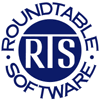

Roundtable Software E-Mail Newsletter Issue #2, December 14, 1999
Conventional Memory : 560k, Protected unchecked
Initial Environment : 1536
Expanded Memory : None
Extended Memory : None
MS-DOS Protected Mode Memory : Auto
Another tip for those users running under Windows 95/98/NT is that it is usually not necessary to load CD-ROM and sound card drivers in the AUTOEXEC/CONFIG. These only apply to your DOS environment where you probably don't need their functionality anyway. Removing these can save you a big chunk of DOS memory that is typically going to waste.
The problem is that with Windows 95+, the buffers which were previously used for a little bit of extra caching are no longer dealt with correctly. Windows 95+ does not properly flush the buffers in a timely manner and this can lead to all kinds of nasty data corruption. One classic example is where two people are generating invoices. Everything seems to be normal, but then when the invoices are viewed after the fact one invoice has most of the detail for both invoices on it while the other invoice has no detail. This is because the invoice links were cached too long, and both processes grabbed the same records because they had no way of knowing that the record was already 'spoken for' by the other process.
It should be noted that we have occasionally seen workstations that will not shut down properly with buffers set to 1. When the user tells the workstation to shut down they never get the screen saying "It's now safe to turn off your computer". In such cases, try setting buffers to 2 - that usually takes care of the problem and hopefully does not provide Windows the opportunity to do too much caching.
One more note - if you do not have a BUFFERS= statement in your CONFIG.SYS file, this does not mean that you have no buffers. The default setting is 20, which you definitely do not want.
By the way, from the look of Artisoft's website, which these days barely mentions Lantastic, users of this network may be orphans one of these days. We've never been fans of Lantastic as it has a lot of weird little peculiarities, so it won't be a tearful farewell on our part. Dealers may want to consider talking to Lantastic users about switching to Windows 98 peer-to-peer, a relatively trouble-free and inexpensive networking solution.
We have heard from quite a few people who are confused about the new Y2K date separator functionality that we added in version 3. Since it is EXTREMELY important that you understand how the new date separator option works, please read on. If you still aren't getting it, please call your dealer.
The Y2K separator can be set to 1 or 2. The setting determines how dates will look on the screen and how they print on reports.
Y2K Separator = 1: Use slash (/) separators for 20th century dates, periods (.) for 21st century
Examples with Y2K Separator set to 1:
01/01/01 = January 1, 1901
12/31/99 = December 31, 1999
01.01.01 = January 1, 2001
12.31.99 = December 31, 2099
Y2K Separator = 2 : Use period (.) separators for 20th century dates, slashes (/) for 21st century
Examples with Y2K Separator set to 2:
01.01.01 = January 1, 1901
12.31.99 = December 31, 1999
01/01/01 = January 1, 2001
12/31/99 = December 31, 2099
When the date separator is set to '1', any date from January 1, 1900 to December 31, 1999 will display with slashes; dates from January 1, 2000 to December 31, 2099 will display with a period. When the flag is set to '2', slashes are used for dates in 2000 and beyond while periods will separate dates in 1999 and before.
Because the separator is not actually stored in the data files, the Y2K Separator only tells the system how to display stored dates and how to interpret dates you enter. This means that after 2000 when you've 'flipped the switch' to have the slash indicate dates in 2000 and beyond, historical dates you entered in 1998 with a slash would now be retrieved and displayed with periods.For example, it's January 20, 2000 and you've set the Y2K Separator flag to '2'. You need to print the sales history report for July of 1998, so the date range you enter would be FROM: 07.01.98 TO: 07.31.98.
Regardless of how the Y2K Separator flag is set, if you do not enter a separator when entering dates, the system assumes the same separator as the current terminal date (the date displayed under the 'Date' option). For example, if the terminal date is January 15, 2000 and you have the Y2K Separator flag set to '2' (slashes in 2000+), a date entered as '0425' would be interpreted by the system as April 25, 2000. If you wanted to enter a date of December 15, 1999 under the same conditions, you'd have to enter '12.15.99'.
The easy way to keep all this straight is to not 'flip the switch' until after January 1, 2000 and then always remember that the slash is used for the current century and the period is for the 'other' century--just like it is now.
Roundtable Software Home | Add-On
Products | Custom Programming | Support
Services | Power Utilities
| Partners | What's New|
Site
Map
|
|
||||
 |
||||
| Roundtable Software • 30831 Cove Road • Tavares, FL 32778-5164 (352) 253-9779 • FAX: (815) 572-5446 All contents copyright © 2000-2008 Roundtable Software. All rights reserved. |
||||